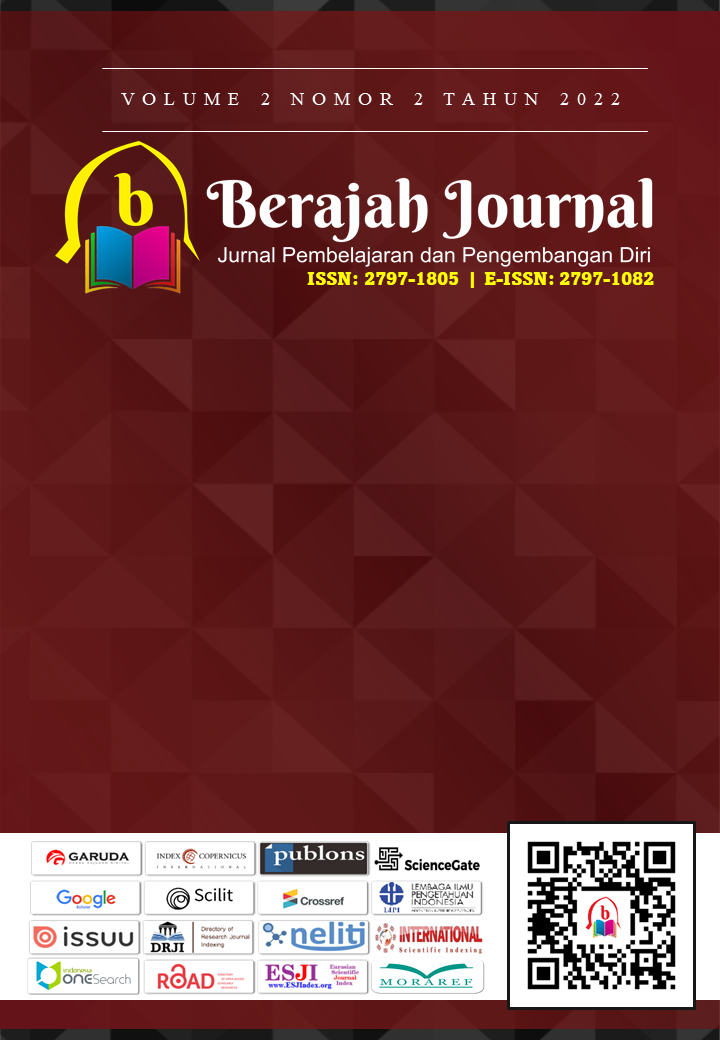THE EFFECT OF FLIPPED CLASSROOM ON STUDENTS READING COMPREHENSION AT SMA NEGERI 1 WAWOTOBI
DOI:
https://doi.org/10.47353/bj.v2i2.112Keywords:
Effect, Flipped Classroom, Reading ComprehensionAbstract
The purpose of study is to investigate the effect of flipped classroom on students reading comprehension at SMA Negeri 1 Wawotobi. This study employed a pre-experimental design with one group pre-test and post-test design without control group for quantitative approach. The population of this research was the entire XI IPS 2 students’ of SMAN 1 Wawotobi who enrolled in academic year 2021/2022. The data were obtained from students’ pre-test and posttest scores. The pre-test was given before the treatment applied and the posttest is given after the treatment finished. Results of the study found that there was a significant positive effect of flipped classroom on students’ reading comprehension, p (.000) < 0.05 with the effect size was 3.57. In light of all these findings, flipped classroom significantly affected students’ reading comprehension.
Downloads
References
Baepler, P., Walker, J., & Driessen, M. (2014). It's not about seat time: Blending, flipping, and efficiency in active learning classrooms. Computers & Education, 78, 227- 236.
Baker, J. W. (2000). The 'Classroom Flip': Using Web Course Management Tools to Become the Guide by the Side. In J. A. Chambers (Ed.), Selected Papers from the 11th International Conference on College Teaching and Learning (pp. 9-17). Jacksonville, FL: Florida Community College at Jacksonville.
Bergmann, J., & Sams, A. (2012). Flip Your Classroom: Reach Every Student in Every Class Every Day. Washington DC: International Society for Technology in Education. 120-190
Dickenson, P. (2014). Flipping the Classroom in a Teacher Education Course. In J. Keengwe, G. Onchwari & J. Oigara (Eds.), Promoting Active Learning through the Flipped Classroom Model (145-162). Hershey: Information Science Reference. (238)
Horowitz, S. (2006 p.5). Reading Comprehension: Reading for Meaning. Retrieved on September 29th, 2016 from http://www.education.com.
Lage, M. J., Platt, G. J., & Treglia, M. (2000). Inverting the Classroom: A Gateway to Creating an Inclusive Learning Environment. The Journal of Economic Education, 31(1), 30-43.
Ogden, L., Pyzdrowski, L., & Shambaugh, N. (2014). A teaching model for the college algebra flipped classroom. KeengweJ. OnchwariG. OigaraJ.(Eds.), Promoting active learning through the flipped classroom model, 47-70.
Prodoehl, D. (2015). Flipping First-Year English: Strengthening Teacher-Student Conferencing through Online Modules. In A. Abigail (Eds.), Implementation and Critical Assessment of the Flipped Classroom Experience (1-24). Hershey: Information Science Reference.
Singh, H. (2003). Building Effective Blended Learning Programs. Educational Technology, 43(6), 51-54.
Downloads
Published
How to Cite
Issue
Section
License
Copyright (c) 2022 Umar, Asri Nofa Rama

This work is licensed under a Creative Commons Attribution 4.0 International License.




























